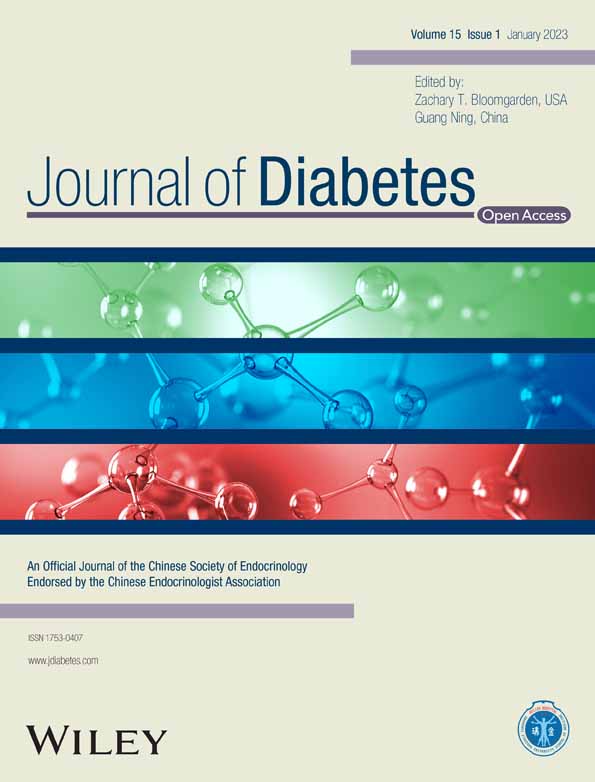Changes in cardiovascular risk factors among children and young adults with type 1 diabetes during the COVID-19 pandemic compared to previous years—Results from the German DPV registry
COVID-19大流行期间1型糖尿病儿童和年轻人心血管危险因素与往年相比的变化——来自德国糖尿病患者随访登记(DPV)的结果
Funding information: Deutsche Diabetes Gesellschaft; German Centre for Diabetes Research (DZD), Grant/Award Number: 82DZD14E03; German Diabetes Foundation (DDS), Grant/Award Number: FP-0446-2022; German Robert Koch Institute (RKI); German Federal Ministry for Education and Research
Abstract
enBackground
The diverse stages of the COVID-19 pandemic led to several social circumstances that influenced daily life and health behavior.
Purpose
To evaluate changes in cardiovascular risk factors and physical activity among children and young adults with type 1 diabetes (T1D) during the COVID-19 pandemic in Germany compared to previous years.
Methods
A total of 32 785 individuals aged 6–21 years at baseline with T1D from the German diabetes patient follow-up (DPV) registry contributed data on 101 484 person-years between 2016 and 2021. The first treatment year of each individual within this period was considered as baseline. Based on trends from 2016 to 2019, we estimated differences in body mass index-SD score (BMI-SDS), blood pressure (BP-SDS), and lipid levels (non-high-density lipoprotein [non-HDL]) between observed and predicted estimates for the years 2020 and 2021 using linear regression analysis standardized for age, diabetes duration, sex, and migratory background. The proportion doing organized sports and smoking cigarettes was analyzed using multivariable logistic regression models.
Results
BMI-SDS increased constantly from 2016 to 2021 without a significant increase above expected values for 2020/2021. Systolic BP-SDS (difference observed vs. expected with 95% confidence interval, 2020: 0.10 [0.07–0.14], 2021: 0.17 [0.14–0.20]) and non-HDL (2020: 2.7 [1.3–4.1] mg/dl, 2021: 4.1 [2.7–5.5] mg/dl) were significantly increased (all p < .001) in both pandemic years. The proportion of subjects participating in organized sports was reduced from over 70% in prepandemic years to 35%–65% in diverse stages/waves of the COVID-19 pandemic. The percentage smoking cigarettes did not change.
Conclusions
We describe an increase in BP and atherogenic lipid levels coinciding with a reduction in physical activity but no acceleration of the prepandemic increases in BMI-SDS among young people with T1D during the COVID-19 pandemic.
摘要
zh目的: 评估德国2019新型冠状病毒(COVID-19)大流行期间,患有1型糖尿病(T1D)的青少年心血管风险因素和体力活动与往年相比的变化。
方法: 来自德国糖尿病患者随访登记(DPV)的32,785名6-21岁基线T1D患者在2016年至2021年期间提供了101,484人-年的数据。在这段时间内,每个人的第一个治疗年被视为基线。基于2016-2019年的趋势,我们使用年龄、糖尿病病程、性别和迁移背景标准化的线性回归分析,估计了2020年和2021年的体重指数(BMI-SDS)、血压(BP-SDS)和血脂水平(非HDL)的观察值和预测值之间的差异。使用多变量逻辑回归模型分析有组织运动和吸烟的比例。
结果: 从2016-2021年,BMI-SDS持续上升,但没有显著高于2020/2021年的预期值。在两个大流行年份,收缩压BP-SDS(观察到的与预期的差异,95% CI, 2020: 0.10[0.07-0.14], 2021: 0.17[0.14-0.20])和非HDL (2020: 2.7 [1.3-4.1] mg/dl, 2021: 4.1 [2.7-5.5] mg/dl)显著升高(所有p<0.001)。参加有组织体育运动的受试者比例从大流行前年份的70%以上降至COVID-19大流行不同阶段/波的35-65%。吸烟的比例没有变化。
结论: 我们发现,在COVID-19大流行期间,患有T1D的青少年的血压和致动脉粥样硬化性血脂水平升高,同时体力活动减少,但BMI-SDS与疫情前相比并没有加速增加。
CONFLICT OF INTEREST
The authors declare no conflict of interest.




